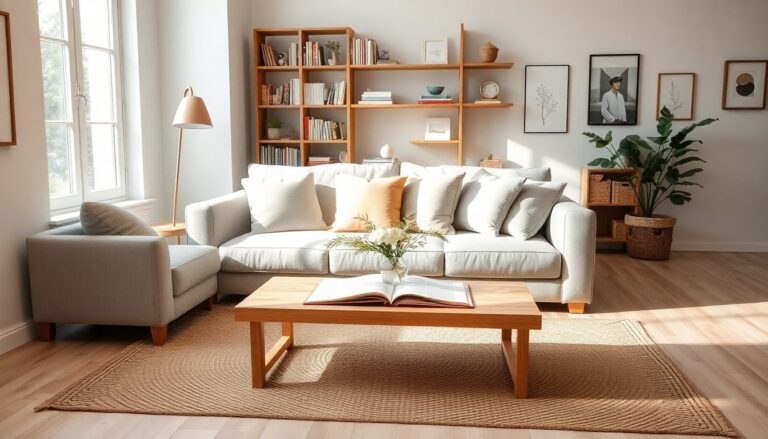Argomenti trattati
Furnishing a home involves more than selecting visually appealing pieces; it requires creating an inviting space that reflects individual style. The right furniture can transform an ordinary room into a comfortable and elegant haven. Whether starting anew or refreshing existing decor, understanding interior design principles can guide choices that align with lifestyle needs.
Understanding your space
Before exploring furniture options, assess the space available. Each room has unique dimensions, natural light, and architectural features that influence choices. Start by measuring the area and creating a floor plan.
Creating a floor plan
A well-considered floor plan aids in visualizing how different pieces will fit together. Use graph paper or digital tools to sketch the room, including doors and windows. This approach allows for experimenting with various arrangements without the hassle of moving heavy items. Consider the intended use of the space: will it be for entertaining, relaxing, or working? Prioritizing functionality will inform your selection of furniture.
Choosing the right furniture
With a clear understanding of your space, the next step is selecting furniture that complements both style and functional needs. When shopping for furnishings, consider materials, colors, and design elements that resonate with personal taste.
Material considerations
Different materials offer varying aesthetics and functionality. For instance, wood furniture provides timeless appeal and durability, while metal pieces can introduce a modern touch. Additionally, consider the maintenance requirements for each material. Upholstered furniture, while comfortable, may necessitate regular cleaning to preserve its appearance.
Color and style harmony
Color significantly influences a room’s atmosphere. Create a cohesive look by selecting a color palette that flows throughout your home. Neutral tones offer a classic backdrop, while bold colors can inject vibrancy and personality. When blending different styles, such as mid-century modern with traditional elements, strive for a balance that allows each piece to shine without overwhelming the space.
Maximizing comfort
Comfort should not be sacrificed for style. When selecting furniture, prioritize pieces that provide both aesthetic appeal and comfort. Key factors include seat height, cushion firmness, and ergonomic design, especially for seating options.
Layering textures
Enhancing comfort can be achieved by layering textures within the space. Incorporate a variety of materials, such as soft throws, plush rugs, and textured cushions. This approach not only adds visual interest but also fosters a cozy atmosphere conducive to relaxation. Consider the scale of your furniture as well: oversized pieces can overwhelm smaller rooms, while too-small items may create a disjointed feel.
Functional furniture options
In today’s fast-paced environment, functional furniture is increasingly crucial. Seek pieces that serve multiple purposes, such as a coffee table that doubles as storage or a sofa bed for guests. This strategy maximizes space without compromising style or comfort.
Final touches and personalization
After selecting main furniture pieces, it is time to add finishing touches that reflect unique personality. Accessories like artwork, plants, and decorative objects can enliven the space. Choose items that resonate with you and convey your story.
Before exploring furniture options, assess the space available. Each room has unique dimensions, natural light, and architectural features that influence choices. Start by measuring the area and creating a floor plan.0

